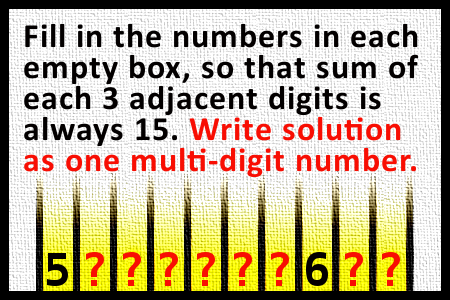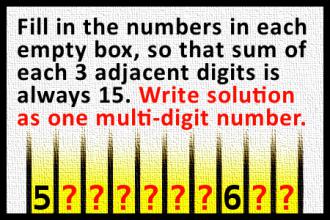Fill in the numbers in each empty box, so that sum of each 3 adjacent digits is always 15
Fill in the numbers in each empty box, so that sum of each 3 adjacent digits is always 15. Write solution as one multi-digit number.Correct answers: 58
The first user who solved this task is Djordje Timotijevic.
#brainteasers #math

In the men's room at work, th...
In the men's room at work, the Boss had placed a sign directly above the sink. It had a single word on it -- "Think!"
The next day, when he went to the men's room, he looked at the sign and right below, immediately above the soap dispenser, someone had carefully lettered another sign which read -- "Thoap!"
The next day, when he went to the men's room, he looked at the sign and right below, immediately above the soap dispenser, someone had carefully lettered another sign which read -- "Thoap!"

